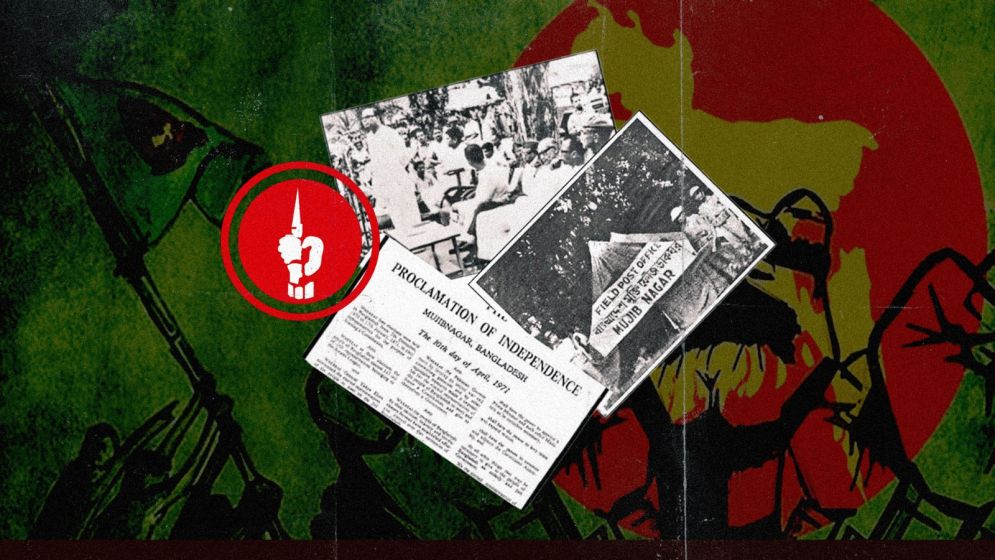Sheikh Mujib, Tajuddin are still “freedom fighters” but did the new Ordinance leave a scope of ambiguity?

Bangladesh woke up to a political firestorm on Wednesday as several leading newspapers reported that the interim government had quietly issued an ordinance redefining who qualifies as a “freedom fighter.”
At the heart of the uproar: allegations that Sheikh Mujibur Rahman, along with other prominent leaders like Tajuddin Ahmed had been stripped of that honor.
The ordinance also introduced new classifications like “Associate Freedom Fighter”and removed the official usage of the honorific “Father of the Nation” and the framing that the country’s independence as having begun after Sheikh Mujib’s declaration.
But contrary to the reports by those media, the ordinance does not actually revoke Sheikh Mujib’s status as a freedom fighter, nor does it strip that recognition from key wartime figures like Syed Nazrul Islam, Tajuddin Ahmad, M. Mansur Ali, and A.H.M. Qamaruzzaman.
Government officials, including Liberation War Affairs Adviser Faruk E. Azam, rushed to clarify this, and the Chief Adviser’s Press Wing labeled the newspaper reports “misinformation.”
At least one newspaper, Samakal, is now facing scrutiny for what appears to be a calculated attempt to paint the government in a sinister light–suggesting the ordinance was passed “in the dead of night,” with echoes of conspiracy.
Still, one cannot overlook the government’s role in creating this confusion. Why introduce such a sensitive and symbolically loaded ordinance with such opacity?
Whether this is an example of bureaucratic clumsiness or a quiet attempt to recast history is still unclear. But what the ordinance essentially lays out, in legal terms, is a redefinition–if not a reframing–of the term Bir Muktijoddha, or freedom fighter.
According to the text, those eligible for this title are civilians who, between March 26 and December 16, 1971, either trained for combat in Bangladeshi villages or crossed into India to formally prepare for war.
As per the definition, they also took up arms against the Pakistani military and its collaborators–Al-Badr, Al-Shams, and the Islamist political party Jamaat-e-Islami–in the struggle for independence.
Importantly, the law limits eligibility to those who were of a certain age at the time, and it affirms the inclusion of formal armed forces–the East Pakistan Rifles, police units, the Mukti Bahini, as well as the members of the Mujibnagar Government and its affiliated forces.
Importantly, the ordinance introduced a new category: Associate Freedom Fighters. This broader group includes Bangladeshi professionals abroad who helped sway global public opinion, officers, diplomats, staff who were appointed by the Mujibnagar government and served them.
Members of the Provincial and National Assemblies, and even artists and journalists who contributed to the war effort through media and culture were considered as Associate Freedom Fighters. The Swadhin Bangla Football Team, a symbol of national pride during the war, also makes the list.
This is where the confusion–and some would say, the political mischief–enters.
-684028b5479ba.png)
Where lies the possible
confusion
To many, the core definition of a freedom fighter presumably centers on direct combat or combat readiness within a tightly defined wartime window. By that metric, leaders like Sheikh Mujibur Rahman, Syed Nazrul Islam, Tajuddin Ahmad, M. Mansur Ali, and A.H.M. Qamaruzzaman—do not strictly qualify.
They neither trained for battle nor crossed the border to fight on the frontlines.
Yet, the ordinance itself explicitly affirms that the Mujibnagar Government–which they led–is recognized as a freedom-fighting entity. To suggest, therefore, that these figures have been “removed” from the nation’s pantheon is just false.
Conspicuously, the ordinance never defines what exactly constitutes the “Mujibnagar Government.” However, it is public knowledge that the Mujibnagar Government was effectively led by five key figures: Sheikh Mujibur Rahman, then imprisoned in Pakistan, and his four closest deputies–Syed Nazrul Islam, Tajuddin Ahmad, M. Mansur Ali, and A.H.M. Qamaruzzaman.
With Mujib behind bars, the remaining four were entrusted with running the wartime executive apparatus in exile. In essence, these five men were the “Mujibnagar Government.”
So while the ordinance affirms that the government-in-exile qualifies for freedom fighter status, its failure to explicitly name or define that government leaves a door ajar–for misinterpretation, for media spin, and for those seeking political mileage from historical gray zones.
Technically, if one were to dissect the language, a bureaucratic purist might question whether the recognition applies to just the symbolic leadership or to every appointee under its authority. After all, governments are usually defined not only by their heads but by the sum of their ministries, envoys, aides, and functionaries.
That distinction becomes even murkier when one considers that these appointees–provincial and national assembly members, radio broadcasters, diplomats–have been categorized separately as “Associate Freedom Fighters” in the same ordinance.
Why the leaders themselves weren’t just named outright, especially given their stature, is baffling.
But again, to be clear: the ordinance does not strip Sheikh Mujib or his colleagues of their freedom fighter status. But it does what no government should do when it comes to the nation's founding myth–it invites doubt.
And in a country where historical clarity is often a casualty of political expediency, that silence speaks volumes.
—
Harun Ur Rashid is a writer and analyst

